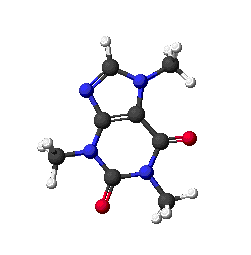
Chemistry
Chemistry 14: 5-6

Homework
Physical Reaction Mechanisms
Chapter 14: 5-6 Homework
- Reading Preparation
- WebLecture
- Study Activity
- Preparation work for chat
- Online Quiz
- Lab Instructions
Reading Preparation
Textbook assignment: Read Kotz and Triechel, Chemistry and Chemical Reactivity Chapter 14: Sections 5 and 6.
Study Notes
- 14.5 For a reaction to occur, the reacting molecules molecules must not only have sufficient kinetic energy of motion (activation energy Ea), they must also collide effectively. The rate of a reaction depends not only on temperature, where heat energy supplies the kinetic energy for the collision, but on the shape of the molecules, and the frequency of effective collisions.
- 14.6 A reaction mechanism may involve multiple reactions between initial reactants and their intermediate products to produce the final products of the overall reaction. The rate of a multiple-step reaction will be constrained to the rate of the slowest reaction step.
Key Formula
| Concept | Equation | Notes |
| Arrhenius equation |
k: reaction rate
Ea: activation energy R: gas constant A: frequency factor (collision rate) |
|
| Arrhenius equation Linear form |
||
| Rate Mechanisms | ||
| Elementary Step | Rate equation | Molecularity |
| A → product | Rate = k[A] | unimolecullar |
| A + B → product | Rate = k[A][B] | bimolecular |
| A + A → product | Rate = [A]2 | bimolecular |
| 2A + b → product | Rate = k[A]2[B] | trimolecular |
Web Lecture
Read the following weblecture before chat: Reaction Mechanisms
Study Activity
Videos for Chapter 14: The Rates of Chemical Reactions
Review the Videos at Thinkwell Video Lessons.
- Under "Chemical Kinetics"
- Temperature and Rates
- The Collision Model
- The Arhennius Equation
- Reaction Mechanisms
- Determining the Rate Laws of Elementary Reactions
- Calculating the Rate Laws of Multiple Step Reactions
- Temperature and Rates
Use the Rates of Reaction Simulation to perform Rate Experiments.
- Accept the default initial scenario.
- Set up the contain with 10 A and 10 BC molecules, and set the bonds and stopwatch to show.
- Begin the experiment and start the stopwatch; let it run for 100 time units (or so). Do any reactions occur?
- Increase the heat until the total average energy is just above the final potential energy. How long does it take for the reaction to reach midpoinmt (5 of each molecule)?
- Reset the initial conditions, vary the experiment, and vary the concentrations.
- What happens when the total average energy is above the peak potential energy from the start of the reaction?
- What happens if you double the concentration and start with 20 of each reactant molecule?
- What happens if you start with 10 of each reactant and each product molecule?
- Draw some conclusions: how does temperature affect the reaction rate? How does concentration affect the reaction rate? Is the rate constant as long as there are reactants available?
Chat Preparation Activities
- Essay question: The Moodle forum for the session will assign a specific study question for you to prepare for chat. You need to read this question and post your answer before chat starts for this session.
- Mastery Exercise: The Moodle Mastery exercise for the chapter will contain sections related to our chat topic. Try to complete these before the chat starts, so that you can ask questions.
Chapter Quiz
- Required: Complete the Mastery exercise with a passing score of 85% or better.
- Go to the Moodle and take the quiz for this chapter.
(Aligns to) AP #11 GUIDED INQUIRY — Titration Methods — Phase II
Carry out the steps you outlined for one of your identified solutions. Based on your experience, adjust any procedures or data collection methods to increase your accuracy with your second solution, then analyze the second solution.
Resources:
- AP2009 11 Determination of appropriate indicators for various acid-base titrations pH determination
- APGIE Investigation 8 Redox Titrations: How Can We Determine the Actual Percentage of H2O2 in a Drugstore Bottle of Hydrogen Peroxide?
- HSCKM V-1 Determine the Effect of Concentration on pH and the pH Range of Indicators
- HCSKM V-2 Determine the Molarity of Vinegar by Titration
- IGHCE Lab 11.1 Concentration effects on pH
- IGHCE Lab 11.2 pH in salt solutions
© 2005 - 2025 This course is offered through Scholars Online, a non-profit organization supporting classical Christian education through online courses. Permission to copy course content (lessons and labs) for personal study is granted to students currently or formerly enrolled in the course through Scholars Online. Reproduction for any other purpose, without the express written consent of the author, is prohibited.